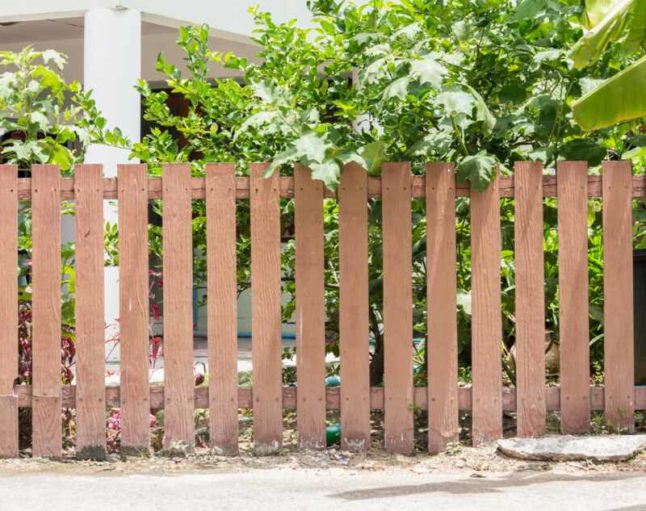All Categories
Featured

Choosing the ideal secure fencing product for your building is a choice that balances appearances, capability, and spending plan. Among one of the most popular alternatives, timber, vinyl, and aluminum each offer distinct benefits and disadvantages. Comprehending these can assist you make an enlightened selection that lines up with your demands. Below's a malfunction of the pros and disadvantages of these three common secure fencing products.
Wood Secure Fencing. Wood secure fencing has actually been an ageless selection for homeowners because of its all-natural elegance and flexibility.
Pros:. Visual Allure: Timber offers a warm and timeless look that matches a variety of architectural styles. Personalized: It can be repainted, tarnished, or cut into special layouts to match personal choices. Cost-Effective: Initially, wood fencing can be an inexpensive option contrasted to other materials. Eco-Friendly: Wood is an eco-friendly resource and can be sustainably sourced. Disadvantages:. High Maintenance: Wood calls for routine sealing, staining, or painting to avoid rot, insect damage, and weathering. Durability Issues: Without appropriate care, timber can warp, split, or degeneration gradually, especially in areas with high humidity. Much shorter Life-span: A timber fencing commonly lasts 10-20 years, relying on the sort of wood and level of maintenance. Wood is perfect for those that value a typical appearance and are willing to commit to its upkeep.
Plastic Fence. Vinyl is a contemporary, low-maintenance fencing choice that has actually grown in popularity in the last few years.

Pros:. Reduced Upkeep: Vinyl does not need paint, staining, or sealing and can be conveniently cleansed with soap and water. Weather condition Resistant: It endures rough climate condition without rotting, rusting, or bending. Resilient: Plastic fencings can last 20-30 years with marginal maintenance. Variety of Styles: Available in several shades, designs, and textures, some plastic choices imitate the look of wood. Disadvantages:. Higher Upfront Expense: Vinyl fencing can be more pricey initially compared to timber. Brittleness in Winter: In extreme cold, vinyl may crack or end up being brittle. Restricted Repairs: Individual panels can be challenging to change, requiring mindful matching to the existing fence. Vinyl is ideal fit for home owners seeking a sturdy, low-maintenance remedy with modern-day looks.
Light Weight Aluminum Secure Fencing. Aluminum fence is a lightweight and sturdy choice, often picked for its modern-day appearance and versatility.
Pros:. Rust-Resistant: Aluminum does not corrosion, making it an excellent choice for moist or wet climates. Low Upkeep: Requires very little maintenance and is simple to clean. Long lasting: While light-weight, aluminum is solid sufficient to hold up against numerous environmental conditions. Lengthy Life expectancy: Can last several years without significant wear or deterioration. Range of Styles: Uses a sleek and classy appearance, usually used for ornamental or ornamental objectives. Disadvantages:. Greater Expense: The preliminary investment for aluminum secure fencing is greater than timber or vinyl. Much Less Privacy: Aluminum fences are often created with open pickets, making them much less efficient for privacy. Susceptible to Dents: Although resilient, aluminum can be nicked by solid influences. Aluminum is suitable for those looking for a fashionable, lasting alternative that requires minimal treatment.
Making the Right Selection. Each fencing product-- aluminum, vinyl, and timber-- uses unique advantages and disadvantages. Your decision must depend on your details priorities, such as budget plan, upkeep choices, climate, and aesthetic goals:
Select wood if you enjoy a conventional appearance and don't mind normal maintenance. Go with plastic if you want a low-maintenance, weather-resistant fencing with contemporary allure. Go with aluminum if you prioritize sturdiness, corrosion resistance, and a sleek design. By weighing these pros and disadvantages, you can select a fence material that enhances your property while satisfying your functional demands.
Latest Posts
Find Out Reduce Expenses on Car Maintenance with Montclare Auto Repair’s Special Deals
Published May 26, 25
1 min read
Discover Cut Costs on Car Maintenance with Montclare Auto Repair’s Limited-Time Deals
Published May 25, 25
1 min read
Discover Special Auto Repair Specials in Chicago at Montclare Auto Repair
Published May 22, 25
1 min read
More
Latest Posts
Find Out Reduce Expenses on Car Maintenance with Montclare Auto Repair’s Special Deals
Published May 26, 25
1 min read
Discover Cut Costs on Car Maintenance with Montclare Auto Repair’s Limited-Time Deals
Published May 25, 25
1 min read
Discover Special Auto Repair Specials in Chicago at Montclare Auto Repair
Published May 22, 25
1 min read